
The release of Apple’s M4 Macs is right around the corner, and many current MacBook owners, as well as potential first-time buyers, are considering if now is the right time to invest in a new device. One question that should play an important role in the decision-making process is: “How long do MacBooks typically last?” Well, I’m here to help you answer this question for yourself based on your personal preferences and current situation.
Table of Contents
Factors That Impact MacBook Lifespan
If you’ve ever read any online discussions about MacBook longevity (like this one, this one, and this one), you’ve likely noticed something interesting: some MacBook owners swap out their devices after just a few years, while others are still happily using their more than a decade-old machines (with the average MacBook lifespan being around 5 years).
So, how can you know if your shiny new MacBook will last you 3 years or 13? It all depends on the following important factors:
Here’s a summary table for the start of the article:
| Factor | Impact on Lifespan |
| Operating System Updates | High |
| Software Compatibility | High |
| Memory | Medium-High |
| Processing Power | Medium |
| Battery Capacity | Medium |
| Durability | Medium |
| Storage Capacity | Low-Medium |
| Shiny Object Syndrome | Unpredictable |
Let’s take a closer look at each of these factors to help you better understand what makes them affect the MacBook lifespan so much.
Operating System Updates
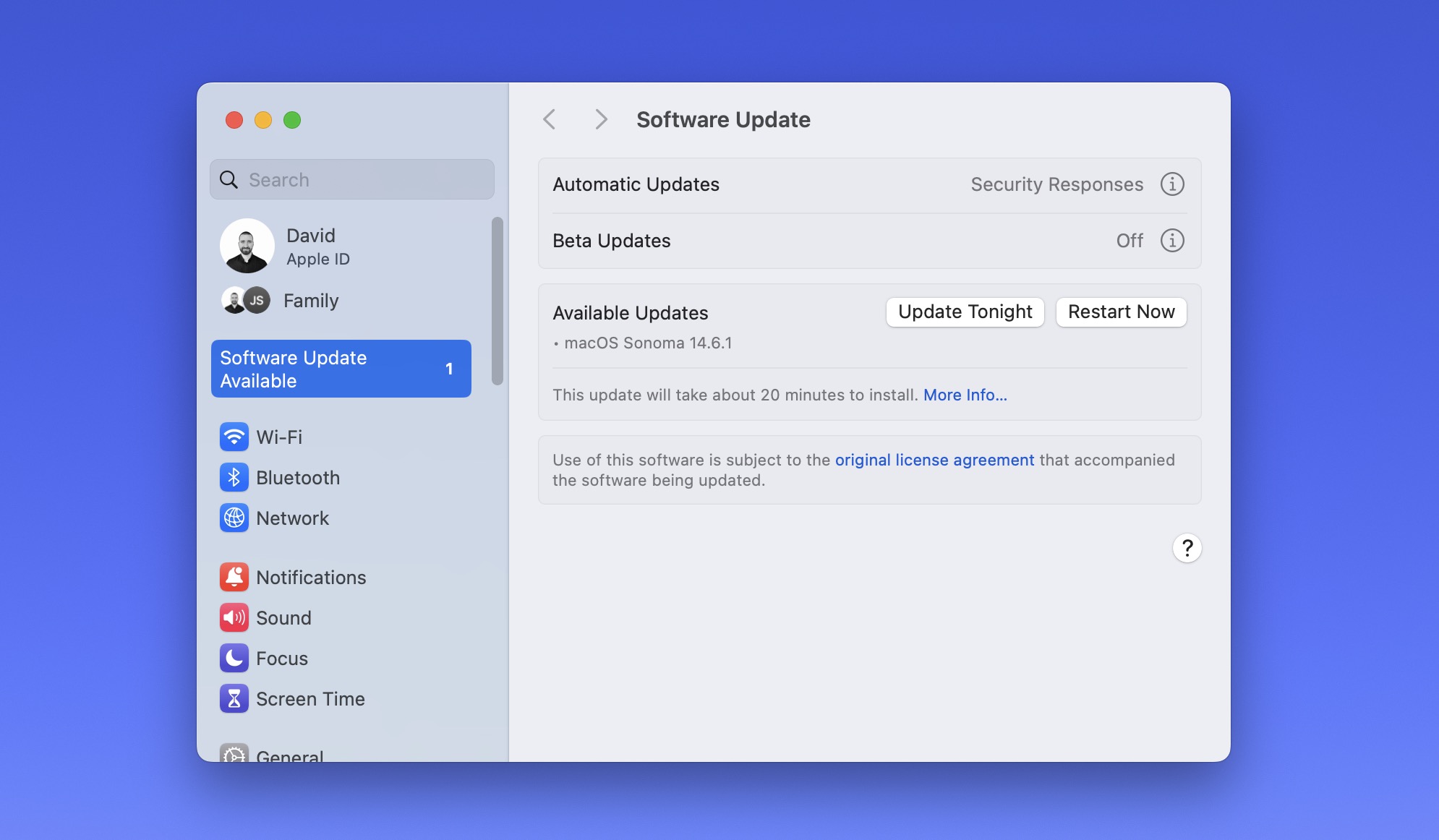
Operating system updates are perhaps the most important factor in determining how long your MacBook will last. As you can see, Apple typically supports each major macOS version for about 3 years:
| macOS Version | Release Date | Support Status |
| Sonoma (14) | Sep 2023 | Current |
| Ventura (13) | Oct 2022 | Supported |
| Monterey (12) | Oct 2021 | Supported |
| Big Sur (11) | Nov 2020 | Ended Sep 2023 |
If your MacBook can’t run the latest macOS, you’ll miss out on new features, which might be a good enough reason for you to get a new machine.
What’s even more important, however, is that MacBooks that can’t run ANY supported version of macOS are extremely vulnerable to cyber attacks and shouldn’t be used online. I think you’ll agree that a MacBook that shouldn’t be connected to the internet is as good as no MacBook at all.
Looking ahead, Apple has announced macOS 15 Sequoia, set to launch in fall 2024. Most Macs from 2018 onwards will be compatible, with the 13-inch MacBook Air models from 2018 and 2019 being the only exceptions.
Software Compatibility
![]()
Unlike Microsoft, Apple isn’t particularly concerned with backward compatibility, with architectural changes, both in hardware and software, happening fairly often. Remember the switch from PowerPC to Intel, and more recently, from Intel to Apple Silicon? These shifts keep the macOS ecosystem moving forward at a rapid pace, but they also force developers to adapt quickly.
As a result, only the latest versions of software applications are often compatible with the newest macOS versions. Take Disk Drill, for example, one of the most popular data recovery software tools for macOS.
If you’re running Sonoma (14) or Ventura (13), Disk Drill 4 won’t launch on your MacBook—only Disk Drill 5 will (see the system requirements page for more information).
And it’s not just third-party software. Apple Intelligence, for example, will be limited to Apple Silicon Macs. This means that even if your Intel-based MacBook can run Sequoia, you’ll miss out on a new version of Siri, intelligent writing tools, and much more.
Memory

When it comes to memory, Apple has historically been rather stingy. Even as I write this article, MacBooks still start with a measly 8 GB of RAM, which is less than what many Android smartphones come with these days (but things are looking up). For instance, the Samsung Galaxy S24 Ultra boasts 12 GB of RAM, while some gaming phones like the ASUS ROG Phone 8 Pro come with up to 24 GB—that’s not a typo.
While 8 GB of RAM may be fine if you’re someone who rarely multitasks and doesn’t do much beyond browsing the web and instant messaging, it’s really not enough for more memory-hungry tasks. Video editing, running a virtual machine, or even hardcore research with many browser tabs open can quickly make an 8 GB MacBook crawl.
There’s also the fact that the new unified memory architecture in Apple Silicon Macs blurs the line between regular Random Access Memory and video memory, so you really want to have as much memory as possible if Mac gaming is something you like to indulge in.
Personally, I don’t believe that 8 GB MacBooks have a bright future ahead of them, and I recommend you avoid them if at all possible. Yes, Apple charges absurd prices for additional memory, but those extra $200 or so could potentially extend your MacBook’s lifespan by years.
Processing Power
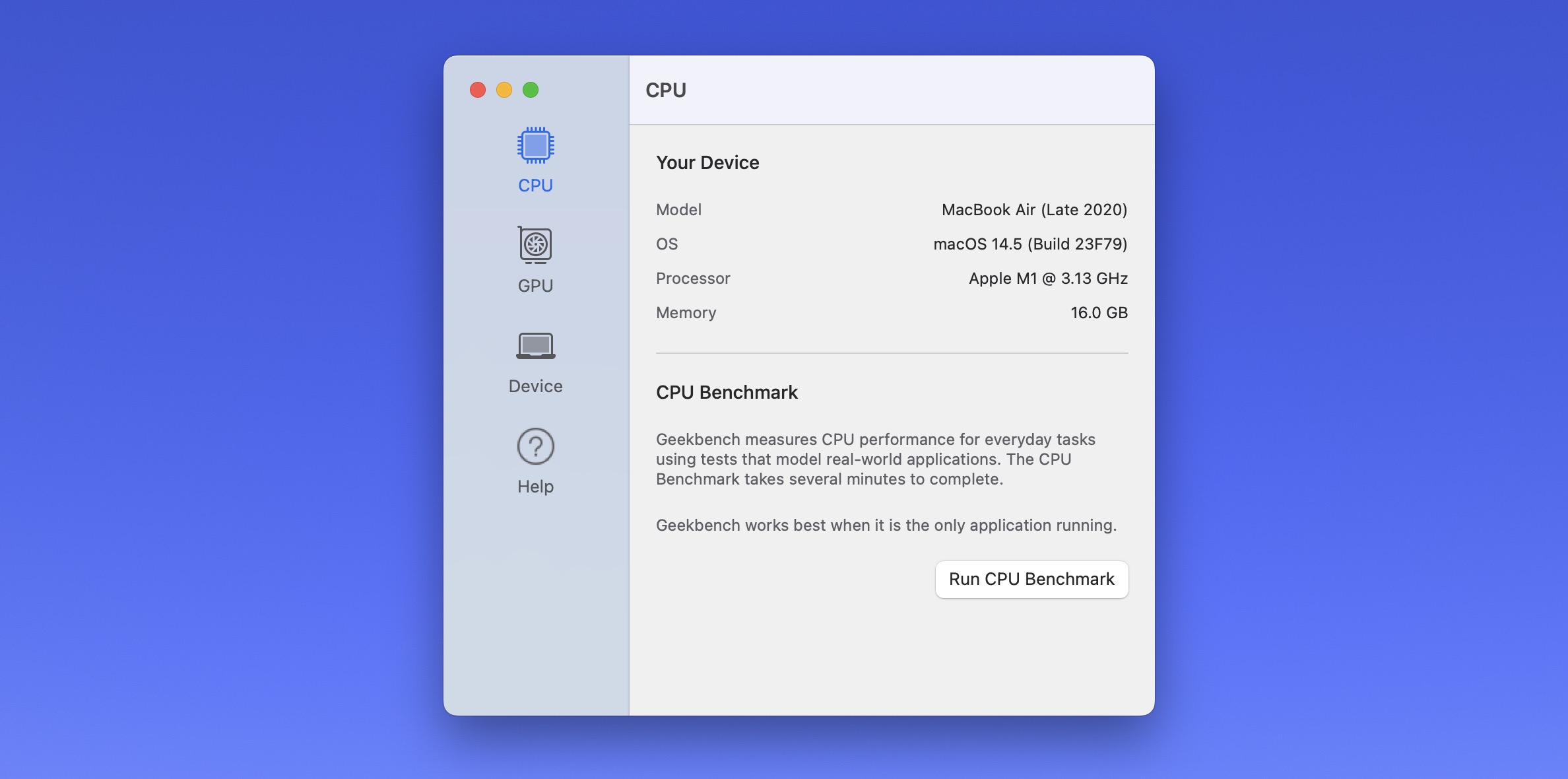
You might have expected processing power to be the most important factor in determining a MacBook’s lifespan, but there’s a good reason why I’ve put it in third place. Since the release of Apple Silicon processors, even the most affordable MacBooks are powerful enough to satisfy most users’ needs with ease.
Here’s how the cheapest MacBook Air from 2020 does against a beefy iMac from the same year (for more detailed benchmarks, check out Geekbench’s Mac Benchmarks):
| Model | Geekbench 5 Score | Processor |
| MacBook Air (Late 2020) | 2342 | Apple M1 @ 3.2 GHz (8 CPU cores, 7 GPU cores) |
| iMac (27-inch Retina Mid 2020) | 1646 | Intel Core i9-10910 @ 3.6 GHz (10 cores) |
| MacBook Pro (16-inch, Nov 2023) | 3128 | Apple M3 Max @ 4.1 GHz (14 CPU cores, 30 GPU cores) |
As you can see, even the entry-level M1 MacBook Air outperforms a high-end Intel-based iMac. And the latest M3 Max MacBook Pro? It’s in a league of its own. So, unless you’re still rocking an Intel MacBook or have very demanding processing needs, you should be good for many years when it comes to raw power.
However, it’s worth pointing out that we’re in the midst of an AI revolution. Processing power requirements are skyrocketing as a result, especially for running the best local AI models like LLAMA 3 or Qwen 2. While your MacBook might breeze through today’s tasks, it’s hard to predict how it will handle the AI-powered applications of tomorrow.
Battery Capacity
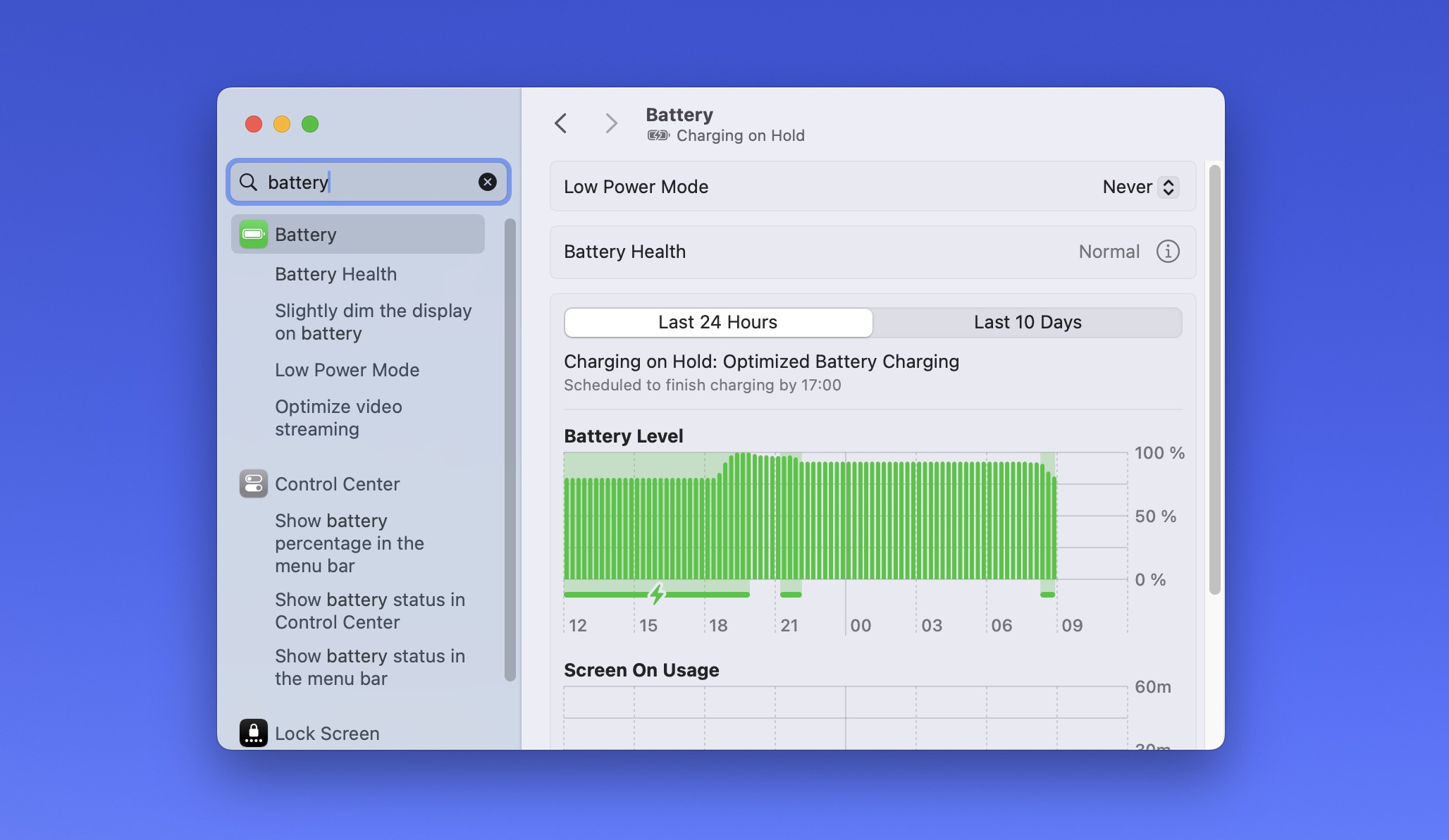
Battery capacity used to be a huge problem with MacBooks and a common reason for upgrading, but the latest Apple Silicon MacBooks are in a league of their own, with some models easily achieving more than 20 hours of actual real-world use on a single charge.
However, there’s a catch. Like all lithium-ion batteries, MacBook batteries lose maximum capacity over time. According to Battery University, a typical lithium-ion battery might retain about 80% of its original capacity after 300-500 charge cycles.
The good news is that batteries can be replaced to substantially prolong your MacBook’s lifespan. Apple offers battery replacement services, and there are also third-party options available. You can also extend your battery’s lifespan and potentially push back the need for a replacement by following some charging best practices, such as:
- Use the Optimized Battery Charging feature in macOS to keep the battery between 20% and 80%.
- Install a charging manager like AlDente.
- Only use Apple’s official charging brick.
- Perform a battery life test from time to time to check for anomalies.
- Never allow your MacBook’s battery to drain completely.
- Never charge your MacBook in extreme temperatures.
Durability
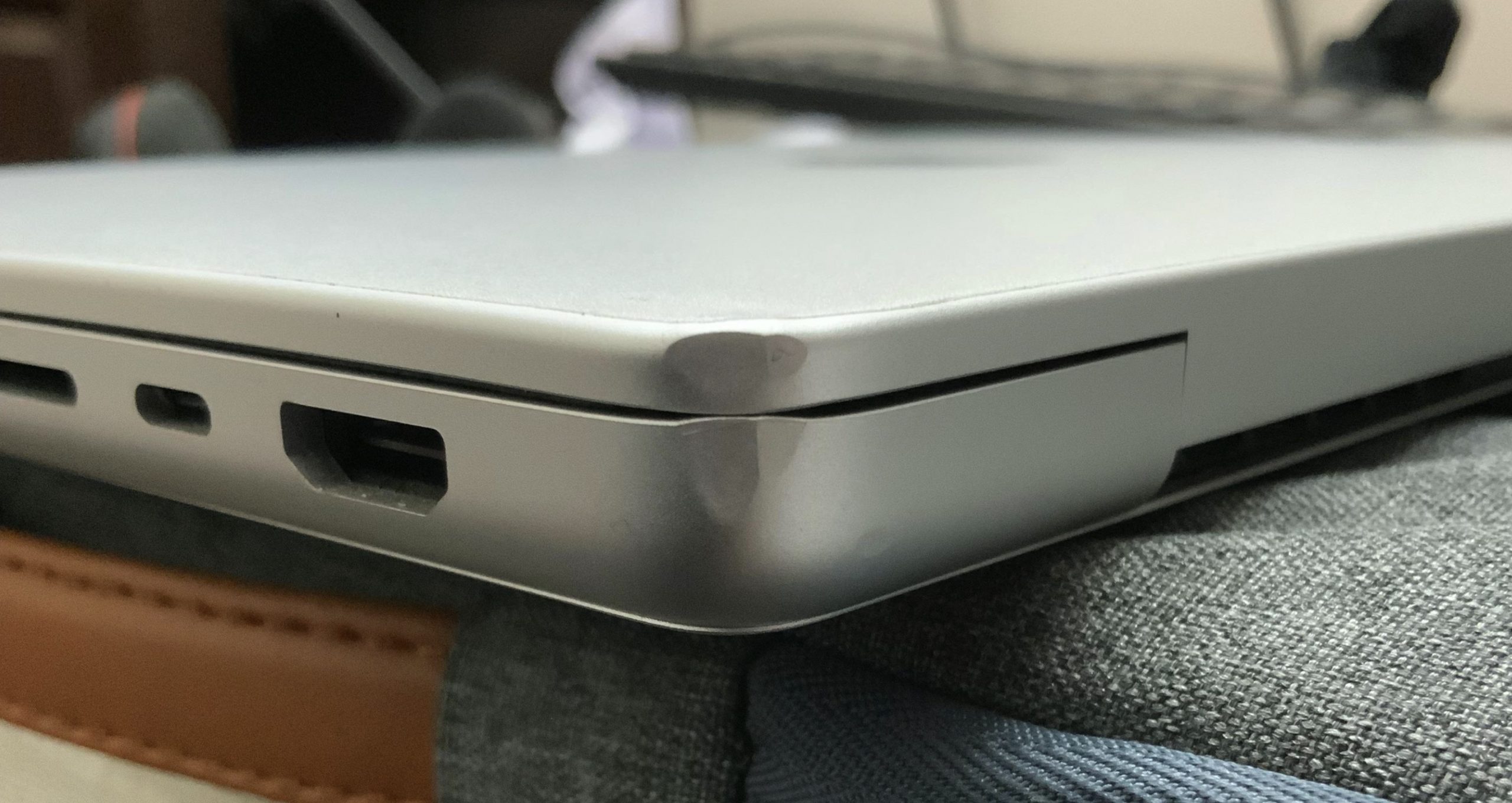
MacBooks are known for their sleek, all-metal unibody construction. This design gives them a solid feel and decent protection against everyday wear and tear. However, MacBooks are definitely not designed for abuse.
One of the most common durability issues affecting MacBook longevity is screen damage because the screen sits flush against the keyboard when closed, so even a small particle like a grain of rice caught between the screen and keyboard can cause a crack when the laptop is closed. This issue has been widely discussed in Apple support forums, with many users reporting screen cracks that seem to appear “out of nowhere” (see discussions here and here).
That’s why you can prolong your MacBook’s lifespan by being extra careful when opening and closing the lid. I also recommend you always use a protective sleeve when transporting your MacBook and avoid placing heavy objects on top of your closed MacBook.
Storage Capacity
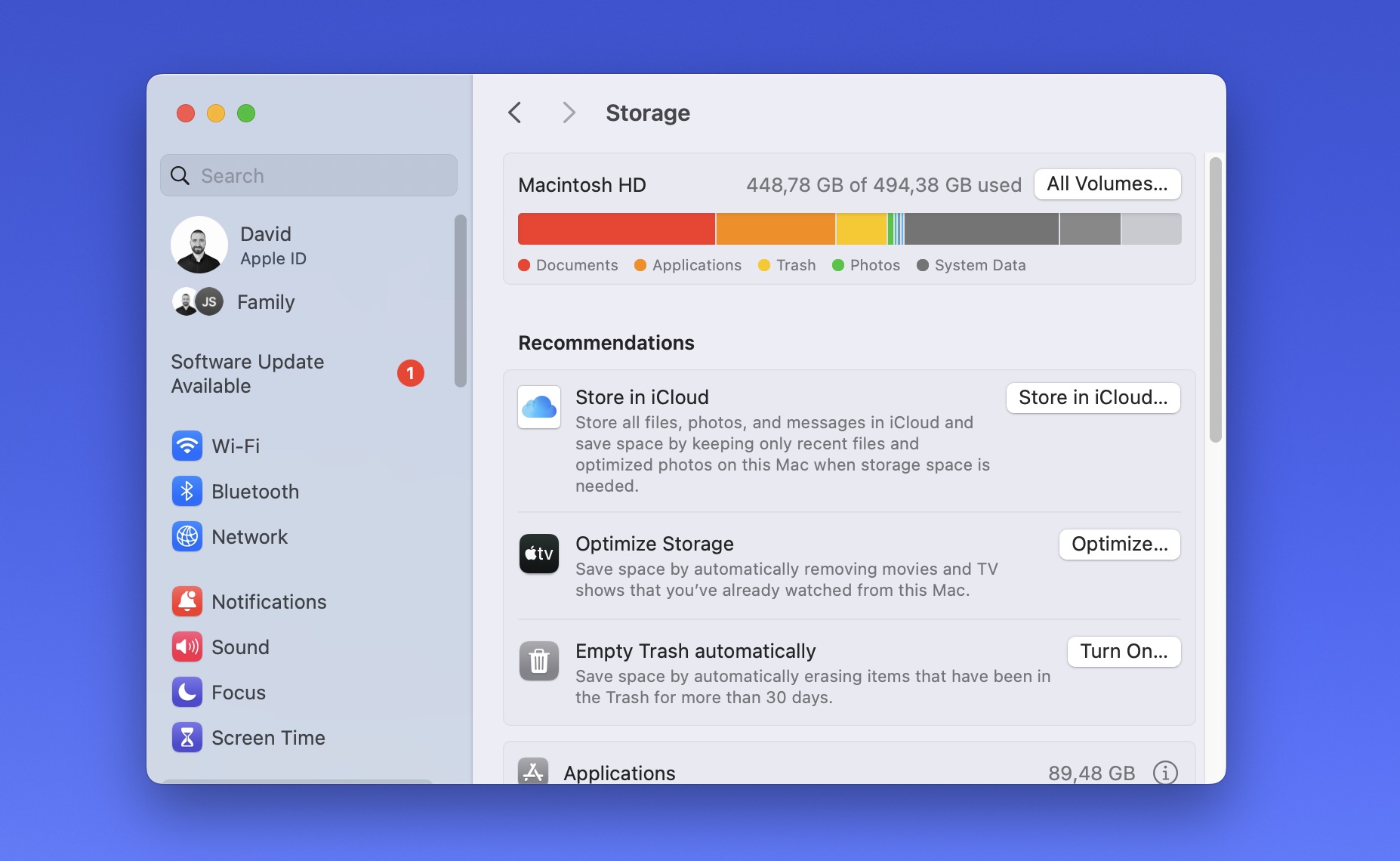
Storage capacity is another factor that can considerably impact your MacBook’s lifespan, especially since modern MacBooks don’t come with upgradable storage. A MacBook without any free storage space is about as useful as a paperweight, no matter how powerful it might be otherwise.
However, I’ve placed this factor lower on my list because there are several ways to work around storage limitations:
- You can easily expand your storage with an external SSD or USB flash drive.
- Services like iCloud, Dropbox, or Google Drive can offload a lot of your data.
- Tools like the Clean Up feature in Disk Drill can help you identify and remove unnecessary files.
That said, while these solutions can extend your MacBook’s usable life, they’re not without drawbacks. External drives can be cumbersome, cloud storage requires a constant internet connection, and disk cleaning is an ongoing process, which is why MacBooks with larger hard drives are usually in service longer.
Shiny Object Syndrome

While all the factors we’ve discussed so far are technical and physical, there’s one more intangible factor that can greatly impact how long MacBooks last for individual users: Shiny Object Syndrome. This phenomenon occurs when users are tempted to upgrade their devices simply because a newer, shinier model is available, even if their current MacBook is still performing well.
If you know that you’ve suffered from this syndrome in the past, then there’s a good chance that you’ll experience it again in the future. When that happens, it will make everything you’ve just read about the typical longevity of MacBooks irrelevant.
Final Thoughts
When it comes to the question “How long do MacBooks last?”, there’s no one-size-fits-all answer because the lifespan of any MacBook depends on a number of factors whose importance differs from person to person.
To maximize your MacBook’s longevity, consider investing in more RAM and storage upfront, take good care of your battery, protect your device from physical damage, and resist the urge to upgrade unless absolutely necessary. After all, the most sustainable laptop is the one you already own.






